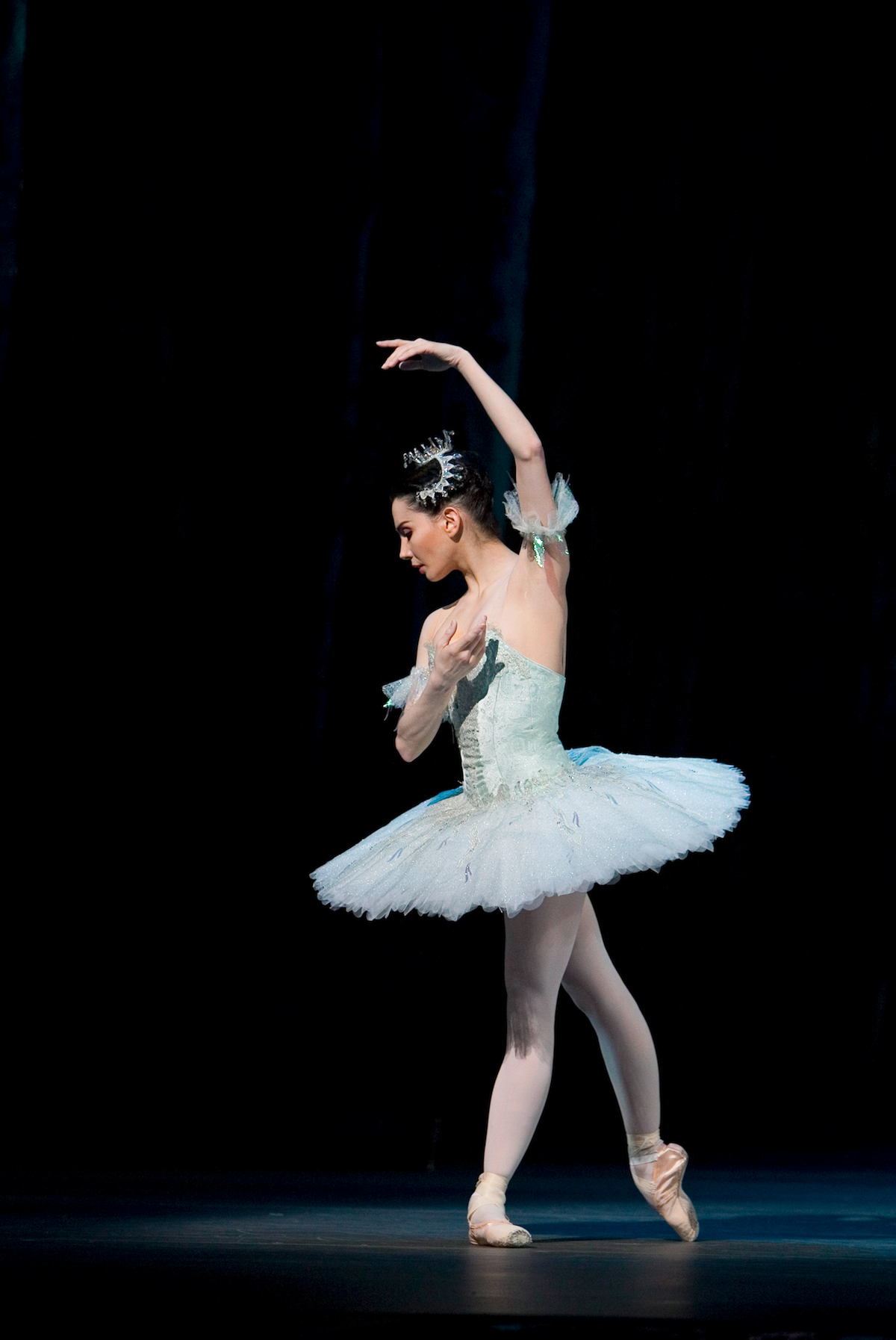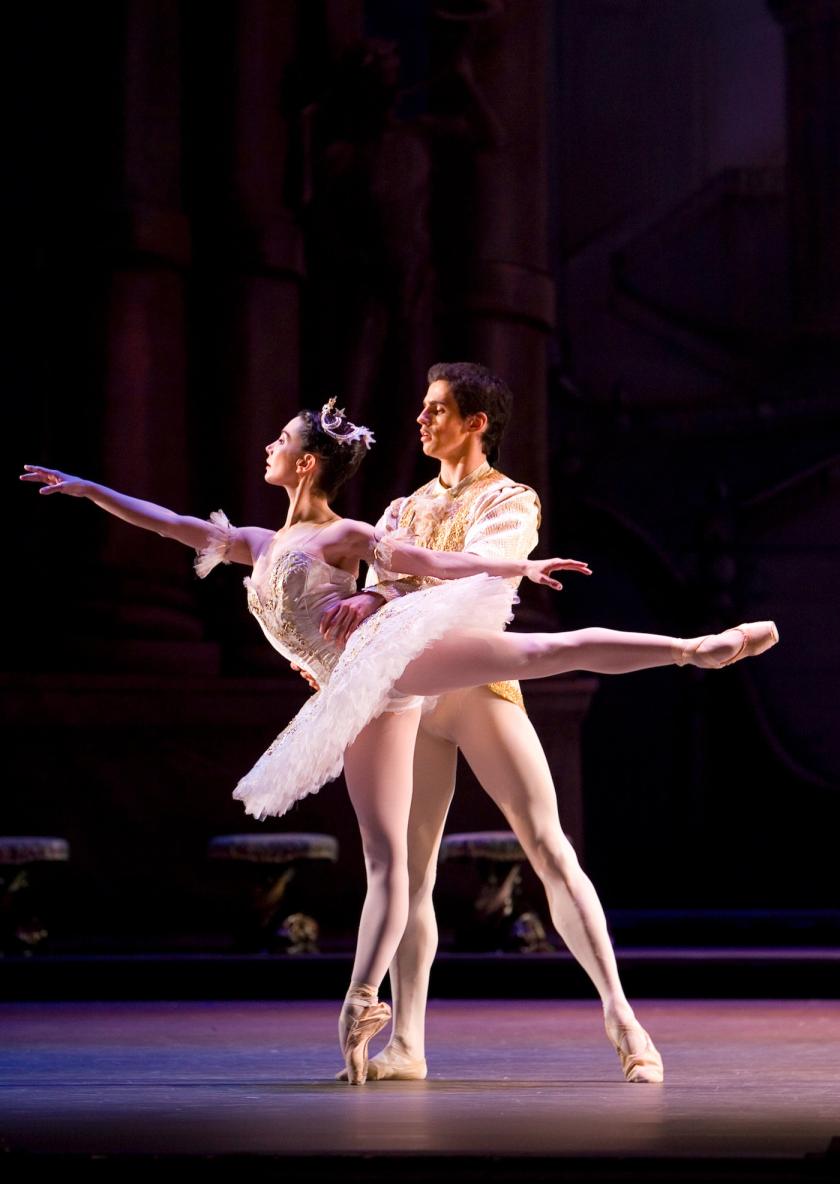The Sleeping Beauty was the ballet that kissed the then Sadler’s Wells Ballet into stardom in 1946; after a string of poorly conceived Beauty productions, today’s Royal Ballet hurtled back 60 years in 2006 to try to recapture some of that historic Forties magic in its current staging of this most awesome and enchanting of the classical ballets. A half-cock production resulted with an unlikely liaison of sherbert-chiffon new costumes inside picturesque Oliver Messel period sets. Now, damn the expense - here are ornate new costumes that also finally pay tribute to that historic production, and it all looks much more unified.
Being a tribute show, rather than a statement of where Beauty is at these days (as the 1990s production designed by the late Maria Björnson was), this version offers the intelligent, aware dancer something paradoxically rather stimulating - the challenge to dance with a feel for the period of Margot Fonteyn. Last night’s wasn’t the first of the run, but its cast was the most interesting one, for into this fragrant, floriferous Forties time warp Tamara Rojo and Federico Bonelli fit like gorgeous matinee movie stars, he with his smouldering Montgomery Clift looks and she with her little, black-haired Liz Taylor sensuality. Bonelli’s gentlemanly grace is something of yesteryear, while the retrospective feel gives Rojo an opulent context which she appears to relish, disguising her highly polished 21st-century technique in her juicy feminine physique like an architect applying scrolls and cherubic ornament to perfectly pure classical line.
 The great English choreographer Frederick Ashton used to watch The Sleeping Beauty over and over, “taking private lessons”, in his famous phrase; Rojo gives her own lessons in interpretation of this totemic and two-dimensional fairyland Princess, using her back and neck with lovely eloquence to show the evolution of her character’s life through Tchaikovsky’s ravishing, instinctual music. Fascinating to see the freedom of pace with which she treated her pre-sleep solo, the one with the violin after the Rose Adagio, which she danced with the improvisatory rubato of a cadenza. And during her sleep, in the Vision Scene, she used those large repeated leg lifts like signals of readiness for awakening, their erotic message underlined by contrast with the demure skipping of the nymphs attending her.
The great English choreographer Frederick Ashton used to watch The Sleeping Beauty over and over, “taking private lessons”, in his famous phrase; Rojo gives her own lessons in interpretation of this totemic and two-dimensional fairyland Princess, using her back and neck with lovely eloquence to show the evolution of her character’s life through Tchaikovsky’s ravishing, instinctual music. Fascinating to see the freedom of pace with which she treated her pre-sleep solo, the one with the violin after the Rose Adagio, which she danced with the improvisatory rubato of a cadenza. And during her sleep, in the Vision Scene, she used those large repeated leg lifts like signals of readiness for awakening, their erotic message underlined by contrast with the demure skipping of the nymphs attending her.
Rojo is something of a one-off in this kind of in-the-moment imaginative recreation. Certainly she was on another plane of classical mastery from anyone else on stage apart from the ever-promising Yuhui Choe, a melodious Fairy of the Crystal Fountain in the Prologue and a delectable, flyaway Princess Florine in the Bluebird duet in Act III. Both these women have trained themselves to place their pointed feet to the ground as if brushing ink onto parchment - only with that kind of perfectionist foot skill can all those feminine fairies with their tiny, telling solos live up to their job descriptions, which none of the others did sufficiently, too stiff of back and clumpy on their toes.
You imagine Rojo's Princess becoming Aurora the Great in timeIf handsome Bonelli could stretch just an extra inch in every movement, add the last 10 per cent in fantasy and intensity, his fine proportions and gentle, accurate musicality would become remarkable. He is, you sense from his demeanour, a relatively minor Prince, and Rojo’s Princess Aurora (who represents in the libretto the daughter of the Sun King, Louis XIV) is evidently her father’s child in potential majesty. Had she not pricked her finger, she might well have found a more combative match in one of the frothily costumed quartet of international aristocrats offering their hands to her on her 16th birthday. You imagine Rojo's Princess becoming Aurora the Great in time.
The production has two distinctly different looks, the Baroque-style of Aurora's palace contrasted with the misty Impressionistic outdoors where the Prince goes hunting a century later, and why not? The shifting scenery for his magical journey by boat to find the sleeping beauty is so well done that its odd juxtaposition of chiffony green nymphs with the clearly Baroque-style Aurora and Lilac Fairy is just one of those things. Farmer's homage to Messel's originals is full of lush detail, the pillars of the palace gardens are ringed with decorative bands, mature trees shade the stone courtyard, and the courtiers’ revised livery, with their new Forties Messel styling, glows with floral colours, iris blue, rudbeckia yellow, rose apricot, in faintly Disney-ish swagged cut (but then Messel's era was also Disney's era).
The fairies now all look quite different from each other, with asymmetric toppings to their tutus, strewn individually like bowls of flowers, with delightful little headdresses. Some combinations hark back 20 years to the Ballets Russes palettes on which Messel trained, emerald green and coral (the court's Master of Ceremonies), bronze-yellow with grape-red (the fairy of the Golden Vine), or damson/white/blueberry for the Lilac Fairy (who has pretty little puffs of silver feathers on her shoulders). It is not as surprising and idiosyncratic a display as the Mariinsky's magnificent 1999 recreation of Petipa's own 1890 production, but picturesque it is, and the Royal Opera House orchestra was conducted in stately happiness by Boris Gruzin.
Still, The Sleeping Beauty is about more than pictures - it's at once mythic as a fable, magnificent as a multimedia theatrical work of its day, and the highest possible challenge to a troupe's finesse and individual skills from top to toe. If a production must be retrospective, I wish the dancing style were adjusted company-wide to bring out its juices and flavours. Petipa's choreography was taken to the Sadler's Wells Ballet originally by Petipa's own pernickety balletmaster, Nikolai Sergeyev, and he was famously a dragon for execution. He would have snorted flames last night at the lack of unified tailoring finish. I wish the men, who beat their feet efficiently, would also point them as if they knew the huge difference it would make; I wish the fairies, who tilt their heads with nice hauteur, did not have such an ill assortment of bunched hand-shapes. Shortcomings were epitomised in the Lilac Fairy (Itziar Mendizabal) and Bluebird (Alexander Campbell). In these roles you demand something out of this world, ethereal brilliance in him, wise sumptuousness in her, not rawness in both.














Add comment